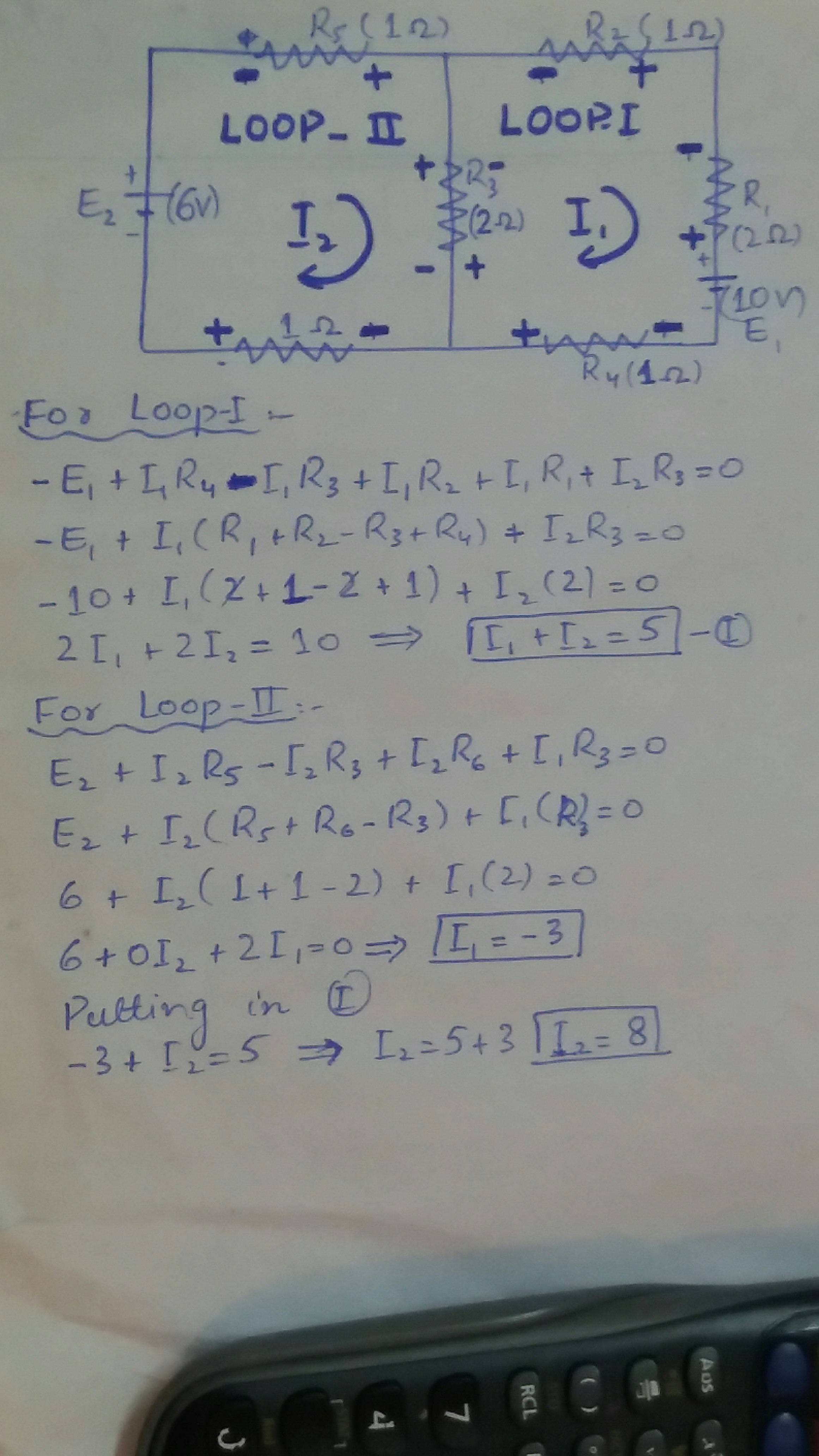Your problem is just a matter of signs. Let's look at the schematic, with signs added:

simulate this circuit – Schematic created using CircuitLab
If you look closely, you will see that the signs I placed around \$R_3\$ are different than the way you did it. You set up \$I_1\$ to go in the opposite direction than is conventional given the polarity of \$V_1\$. That's fine. There's no problem doing it that way. But if you do it that way, then you must arrange the signs correctly. Since the (-) end of \$V_1\$ touches \$R_4\$ on the right, that side of \$R_4\$ must be more negative than the other side. So you place the sign that way and also continue that process around the \$I_1\$ loop. I think you will see what I've done here makes sense now.
Now the same process is followed for \$I_2\$ and you can see how the left side of \$R_5\$ is more positive than the right side. And so I've also arranged the signs related to \$I_2\$, accordingly, around its loop as well.
At this point you can see that both currents result in a similar sign arrangement across \$R_3\$, and not an opposing arrangement. Therefore, the mathematical equations work out this way:
\$ \$
LOOP \$I_1\$:
\$-V_1+I_1\cdot R_4+\left(I_1+I_2\right)\cdot R_3 + I_1\cdot R_2 + I_1\cdot R_1 = 0\$
\$I_1\cdot\left(R_1+R_2+R_3+R_4\right) + I_2\cdot R_3 = V_1\$
\$6\cdot I_1 + 2\cdot I_2 = 10\$
\$3\cdot I_1 + I_2 = 5, \;\;\;\therefore I_2 = 5 - 3\cdot I_1\$
\$ \$
LOOP \$I_2\$:
\$V_2 - I_2\cdot R_5 - \left(I_1+I_2\right)\cdot R_3 - I_2\cdot R_6 = 0\$
\$V_2 = I_1\cdot R_3 + I_2\cdot \left(R_3+R_5+R_6\right)\$
\$6 = 2\cdot I_1 + 4\cdot I_2\$
\$3 = I_1 + 2\cdot I_2, \;\;\;\therefore I_2= \frac{3-I_1}{2}\$
\$ \$
This results in:
\$5 - 3\cdot I_1 = \frac{3-I_1}{2}, \;\;\;\therefore I_1 = \frac{7}{5}A\$
\$I_2 = 5 - 3\cdot I_1 = 5 - 3\cdot \frac{7}{5}, \;\;\;\therefore I_2 = \frac{4}{5}A\$
You can now estimate, for example, that the magnitude of the total current through \$R_3\$ will be \$I_1+I_2=2.2A\$. The direction of that conventional current will be from the shared (+) side to shared (-) side, or downward pointing.





